Huawei's P-series of handsets has always had a focus on the camera, and this year is no different. The P20 Pro is certainly the first of its kind, offering a triple-lens camera that consists of an 8-megapixel telephoto lens, a 20-megapixel monochrome lens, and a 40-megapixel RGB lens.
Announced last month, the handset is the first in nearly five years to offer a camera with such a resolution, since Nokia released the legendary Lumia 1020 Windows Phone with a 41-megapixel camera. Huawei uses Leica lenses in its premium cameras, and the images come out great.
There's only one problem, which is that the P-series isn't sold in the United States, much to the dismay of, well, me. I've always loved the P-series, and the P10 was one of my favorite phones last year.
Other than the camera, the internals are similar to other flagships that Huawei has introduced this year, like the Mate 10 Pro and the Honor View10, with a Kirin 970 chipset. The SoC includes a Neural Processing Unit, which allows it to do AI-related tasks like how the camera can see what it's looking at and adjust settings accordingly.
Specs
| CPU | Octa-core Kirin 970, 2.4GHz quad-core ARM Cortex-A73, 1.8GHz quad-core ARM Cortex-A53 |
|---|---|
| GPU | Mali-G72 MP12 |
| Display | 6.1 inches, 1080x2240 (18.7:9), 408ppi, AMOLED |
| Body | 155x73.9x7.8mm (6.10x2.91x0.31in), 180g (6.35oz) |
| Camera | 40MP RGB, 20MP monochrome, 8MP telephoto, Front - 24MP |
| Aperture | f/1.8, f/1.6, f/2.4, Front - f/2.0 |
| Video | 4K - 30fps, 1080p - 60fps, Front - 720p - 30fps |
| Camera features | Optical image stabilization, 3x optical zoom, 5x hybrid zoom, PDAF, laser AF, LED flash, Leica optics, 960fps slow motion video |
| Battery | 4000mAh |
| RAM | 6GB |
| Storage | 128GB |
| Colors | Twilight, Black, Midnight Blue, Pink Gold |
Day one
Design
I'd be misleading you if I didn't at least mention that the P20 Pro borrows some design from Apple's iPhone X. It's obvious from the vertical camera module place on the top-left of the device, and the notch at the top of the display. It's not the first time that Huawei has borrowed design from Apple, and it won't be the last.

The P20 Pro has a glass back that comes in Black, Pink Gold, Twilight, and Midnight Blue. I was sent the blue one, although Twilight is easily the coolest, with a blend from purple to cyan. Unfortunately, the glass back doesn't mean that it supports wireless charging. Huawei told me that this was because Qi charging is too slow, and it's focused on its own fast charging technology.
I'm OK with that, but wireless charging is the only real benefit to a glass back, other than the fact that it looks pretty. In my opinion, there needs to be a real benefit to having a phone where the back can shatter if you drop it.

As I mentioned, there's also a vertical camera housing on the top-left, and below that is the third, 8MP telephoto lens, with the LED flash below that. On the left side of the device is the nano-SIM slot, and although the P20 Pro isn't sold in the U.S., you won't have a problem popping a GSM SIM card in there.

On the right is where you'll find the volume rocker and the power button, and there are dual speaker grilles on the bottom, along with a USB Type-C port for charging. There's no 3.5mm headphone jack on the device, but it does come with USB Type-C earbuds and a USB Type-C to 3.5mm adapter.

The fingerprint reader on the P20 Pro is located on the front of the device, below the screen. This can also serve as one-button navigation, allowing the user to tap to go back, hold to go home, or swipe across to go to multitasking.
Display
The Huawei P20 Pro features a 6.1-inch 1080x2240 AMOLED display, and along with the camera, this is one of the key advantages over the P20, which uses an LCD. LCD panels are entirely backlit, which is why when your TV is showing you something black, you can still tell that it's on. With AMOLED, or organic light emitting diodes, pixels can be turned off, resulting in true blacks. They also tend to have more vibrant colors.
And yes, the display is beautiful, bright, and vibrant. Huawei actually makes fantastic LCDs, so an AMOLED screen is even better.

The P20 Pro does offer an always-on display setting. Huawei doesn't promote it, and I actually didn't even know about it until someone pointed it out in a comment (thanks Simon L). You have to dig it up in settings, and while it's nice to see the time, it doesn't show when you have notifications. It also drains the battery more than I'd like.

And then, of course, there's the notch. Essential was the first to use a notch, and Apple popularized the gap at the top of the display in favor of narrowing bezels. I don't mind it, but if you do, you should understand that this is the new reality. For some reason, everyone is OK with sacrificing some level of functionality in favor of their device looking prettier, and that goes for glass backs that make phones more fragile, narrow bezels that make the display easier to touch by accident, and a lack of headphone jacks. And this isn't a shot at Huawei; it's clearly what users want, and it's the new reality. If you don't like it, stop making fun of companies that have bezels on their premium devices.
Fingerprint sensor and facial recognition
As I mentioned, there's a fingerprint sensor placed below the display, and it's awesome. Great fingerprint sensors have become commonplace in recent years, but I still feel like Huawei's are the best on the market. When I first started experiencing the company's fingerprint sensors, I'd find myself trying to unlock the phone with other fingers because I didn't believe that it was actually scanning anything.

The fingerprint sensor also serves as one-button navigation, which is not turned on by default. I actually like it a lot. You just tap to go back, hold to go home, and swipe across to get to multitasking. My one issue is that this is not a standard across Android. Most people won't be affected by this, but if you use a lot of phones, you might run into issues. For example, Motorola also offers a one-button navigation feature, but it works differently. Obviously, something like this relies on muscle memory.
Huawei also offers a facial recognition feature on the P20 Pro, which uses the front camera. It doesn't have any additional sensors like Apple's iPhone X has, or Windows 10 PCs with facial recognition. That means that you can easily unlock the phone with a picture of yourself, or someone else can, making it less secure. Obviously, it's more about convenience.
By default, facial recognition sends you straight to the home screen, but you can set it so that you still have to swipe to unlock. I prefer the latter, because sometimes I just want to check the time or see my notifications, and if you don't have to swipe, the device will skip right past that.
Battery life
The Huawei P20 Pro comes with a 4,000mAh battery, so as you can imagine, battery life is pretty good. I've not had any issues getting through the day at all. As I mentioned, the always-on display does use more battery life than I'd like. Overnight, the phone discharges by about 10%, whereas it only discharges by about 3%-5% if it's not using the always-on display. Still, even with the feature turned on, a full day of usage is no problem. Without it, you could probably even push it to two days, but you'd have to be a braver man than me.
The device uses Huawei's SuperCharge technology, which offers a 0%-58% charge in just 30 minutes. As with any fast charging technology, it goes fastest from 0%-80%, and charges slower the rest of the way. Overcharging a lithium ion battery can cause an explosion, and we wouldn't want that.
Camera
I absolutely love the camera on this phone, for a number of reasons. It includes three sensors: a 40-megapixel RGB lens, a 20-megapixel monochrome lens, and an 8-megapixel telephoto lens. The RGB sensor is 1/1.7" with an f/1.8 aperture, so the low-light performance is excellent. But the monochrome sensor is great too, and the black and white photos still look much better than if you took a color photo and converted it.

So what's the benefit of 40 megapixels? I'm glad you asked. The answer is lossless zoom. Even a 4K display has about 8.3 megapixels, and a full HD display is about 2.1 megapixels. This allows plenty of room for cropping your photo without losing any noticeable quality.
Huawei promises 5x hybrid zoom though, which should use a combination of the digital zoom that's offered by the 40MP lens and the optical zoom that's offered by the telephoto lens.
There was an old commercial for the Nokia Lumia 1020 - which had a 41-megapixel camera - that ended by saying that with the Lumia 1020, you have the best seats in the house. I did a comparison between the 1020 and the P20 Pro, and the same can be said about Huawei's new flagship.
The software offers different settings for this. The default is to take a 10-megapixel image, at 1x, 3x, or 5x. You can also set it to take a 40MP image, but you can't zoom before taking the picture at all.
The P20 Pro includes Huawei's Kirin 970 chipset, which includes a Neural Processing Unit, so the device can tell what the camera is looking at and adjust the camera settings. There are now 19 different scenes, such as dog, cat, blue sky, snow, flowers, greenery, and more.
Huawei also redesigned the Camera app, and you can finally disable the AI photography. You can't disable it completely, but when it tells you that it's looking at a dog, you can easily tell the app that it's not a dog. But the app works more like a regular Camera app, as you no longer have to swipe in from the sides to get to different modes or settings. There's now a settings icon to tap, and a bar with different modes along the side.
Let's check out some samples.
In the third from the bottom row, you can see the difference between when the AI photography feature is turned on or off. Indeed, the camera takes some beautiful pictures.
Huawei also said that it has solved stabilization, so you can leave the shutter speed on for longer and it won't come out shaky. That's where that final image comes from, and you can judge it for yourself.
The trend in this year's Android flagships also seems to be slow motion video at 960fps. I'm not big on recording slow motion video, and I'm really not sure if a lot of people are, but the feature is there. What disappoints me more is that there's no 4K at 60fps, unlike the iPhone 8/8 Plus/X and the Samsung Galaxy S9/S9+.
The slow motion video feature only records for about two seconds and then stops, and it only works at 720p. If you want more footage, then you'll need to use another frame rate. Your other options are 1080p at 120fps and 720p at 240fps.
Again, I'm not sure how useful this is, especially when you can only record a couple of seconds, but it's there if you need it.
Performance
There's a reason that I save performance for last, which is that it really doesn't matter. This is 2018 and the P20 Pro is a flagship device. It's going to meet your needs.
Nevertheless, the Kirin 970 includes four 2.4GHz ARM Cortex-A73 cores and four 1.8GHz ARM Cortex-A53 cores, using big.LITTLE architecture. This means that tasks that require more power use the cores that consume more power, and things like syncing background notifications can use the more efficient cores.
For benchmarks, I used AnTuTu, Geekbench 4, and GFXBench. First up is AnTuTu, which tests a little bit of everything.

As you can see, it scored pretty well, since AnTuTu now gives users a way to compare to other devices. Next up is Geekbench 4, which tests the CPU.

This is around the same score as the Galaxy Note8, which scored 1,866 on single-core and 6,539 on multi-core. It's nowhere near the iPhone X though, which scored 4,237 and 10,112, respectively. Finally, GFXBench tests the GPU.

To clarify, the offscreen tests are meant to put all devices on an equal ground. For example, a 1440p display has a lot more pixels to push than a 1080p display, so it wouldn't be fair to compare the GPUs of two such devices, unless they're set to the same resolution.
Conclusion
I really love the Huawei P20 Pro, and it hasn't let me down from previous iterations of the device. It does have its shortcomings, such as the lack of wireless charging, a headphone jack, and 4K 60fps video capture, but these aren't that big of a deal. It's an awesome device, with a beautiful display, a fantastic camera, and a gorgeous design.

I was a Nokia Lumia 1020 owner back in the day, and like many, I dreamed of the day when we would see a new phone with a 40MP camera, but one with modern technologies. I wanted to see one with 4K video recording, fast focusing and capture, and multiple lenses. The Huawei P20 Pro is just that.
To be honest, if you don't care about the camera, this probably isn't the phone for you. It's a great handset, but you're paying for that additional camera tech. You might want to look toward the Mate 10 Pro, or the Honor View10.
But if you care about mobile photography, or even if you want the best possible photos of your kids that you can look back on in a few years, the Huawei P20 Pro is a great choice.















































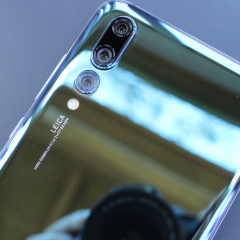
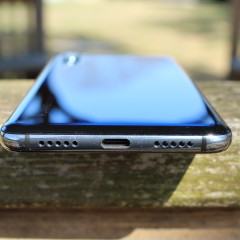
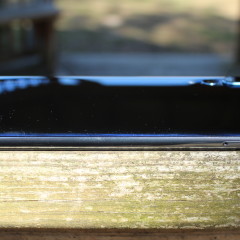



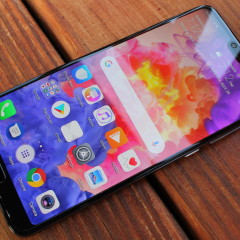

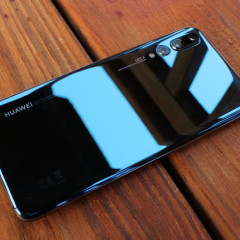
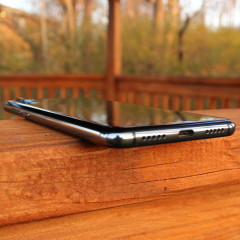
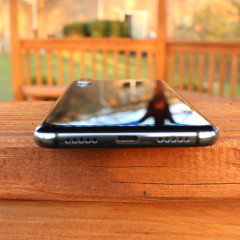
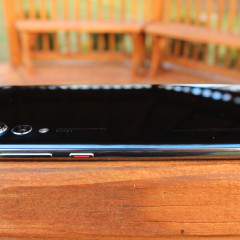
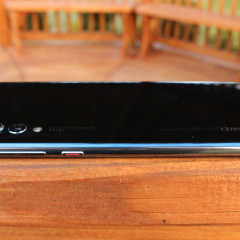
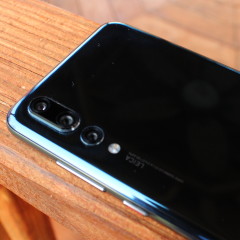
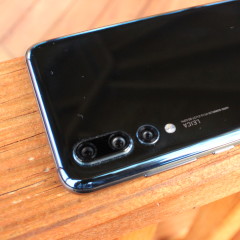
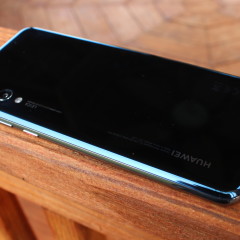
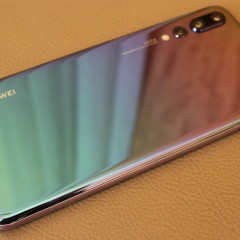
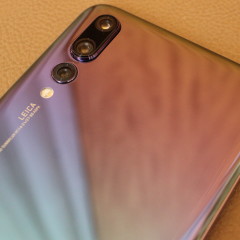

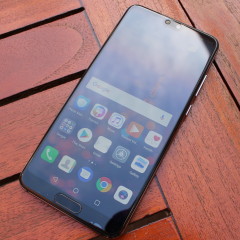
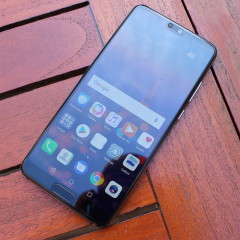
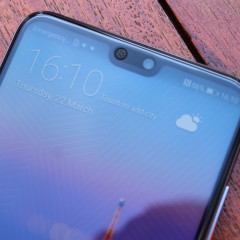
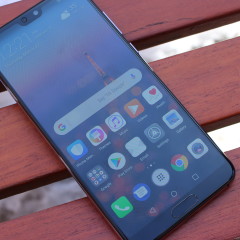









19 Comments - Add comment